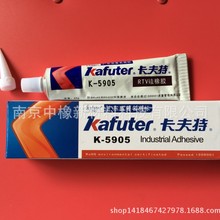當前位置:
網站首頁 — 醫(yī)療設備設計中的人機交互優(yōu)化與用戶體驗
醫(yī)療設備設計中的人機交互優(yōu)化與用戶體驗


Title: Optimizing Human-Machine Interaction and User Experience in Medical Device DesignIntroduction:In today's rapidly advancing healthcare industry,醫(yī)療優(yōu)化用戶 the design of medical devices plays a crucial role in ensuring effective treatment and patient safety. A vital aspect of this design process is optimizing human-machine interaction and prioritizing user experience. By integrating these factors, medical device manufacturers can create products that are not only efficient and reliable but also intuitive and user-friendly. This article explores the significance of human-machine interaction (HMI) optimization and highlights key considerations for enhancing user experience in medical device design.1. Importance of HMI Optimization:Human-machine interaction optimization focuses on creating a seamless interface between the medical device and the user. This entails designing intuitive controls, informative displays, and efficient workflow integration. By prioritizing HMI optimization, medical devices can enhance accuracy, reduce errors, and improve overall operator performance. Furthermore, a well-designed HMI reduces cognitive burden, leading to improved user satisfaction and ultimately, better patient outcomes.2. Key Considerations for Enhancing User Experience:a. Usability Testing: Conducting extensive usability testing throughout the design process allows for gathering valuable feedback from users. This iterative approach helps identify potential challenges and areas for improvement, resulting in a more user-friendly and efficient medical device.b. Clear and Intuitive Interfaces: Medical devices should feature clear and intuitive interfaces that guide users through each step of the operation. The use of symbols, colors, and standardized terminology ensures a consistent and easily understandable interaction, regardless of the user's level of expertise.c. Customizable Settings: Offering customizable settings allows users to tailor the device's functionality to their specific needs or patient requirements. This flexibility ensures that healthcare professionals can adapt the device to different scenarios, leading to improved efficiency and user satisfaction.d. Feedback Mechanisms: Real-time feedback mechanisms, such as visual or auditory cues, play a critical role in enhancing the user experience with medical devices. Providing immediate feedback helps users assess the success or failure of their actions, increasing confidence and reducing errors.e. Ergonomics: Considering ergonomic principles in medical device design is essential to minimize user fatigue and discomfort during prolonged use. Ergonomically designed devices reduce the risk of repetitive stress injuries and ensure optimal user comfort.Conclusion:Optimizing human-machine interaction and prioritizing user experience is paramount in the design of medical devices. By focusing on usability testing, clear interfaces, customizable settings, feedback mechanisms, and ergonomics, manufacturers can create devices that are intuitive, efficient, and reliable. These improvements both enhance operator performance and contribute to positive patient outcomes. Ultimately, the integration of HMI optimization and user experience considerations sets a high standard for medical device design, ensuring both healthcare professionals and patients benefit from innovative and user-centric solutions.
友情鏈接